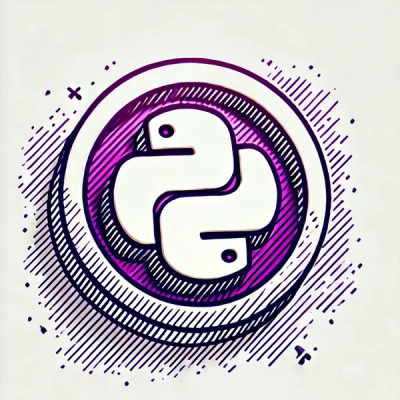
Product
Socket Now Supports pylock.toml Files
Socket now supports pylock.toml, enabling secure, reproducible Python builds with advanced scanning and full alignment with PEP 751's new standard.
github.com/containers/podman/v2
Podman (the POD MANager) is a tool for managing containers and images, volumes mounted into those containers, and pods made from groups of containers. Podman is based on libpod, a library for container lifecycle management that is also contained in this repository. The libpod library provides APIs for managing containers, pods, container images, and volumes.
At a high level, the scope of Podman and libpod is the following:
Podman presently only supports running containers on Linux. However, we are building a remote client which can run on Windows and OS X and manage Podman containers on a Linux system via the REST API using SSH tunneling.
If you think you've identified a security issue in the project, please DO NOT report the issue publicly via the Github issue tracker, mailing list, or IRC.
Instead, send an email with as many details as possible to security@lists.podman.io. This is a private mailing list for the core maintainers.
For general questions and discussion, please use the
IRC #podman channel on irc.freenode.net.
For discussions around issues/bugs and features, you can use the GitHub issues and PRs tracking system.
There is also a mailing list at lists.podman.io.
You can subscribe by sending a message to podman-join@lists.podman.io with the subject subscribe.
Podman can be easily run as a normal user, without requiring a setuid binary.
When run without root, Podman containers use user namespaces to set root in the container to the user running Podman.
Rootless Podman runs locked-down containers with no privileges that the user running the container does not have.
Some of these restrictions can be lifted (via --privileged, for example), but rootless containers will never have more privileges than the user that launched them.
If you run Podman as your user and mount in /etc/passwd from the host, you still won't be able to change it, since your user doesn't have permission to do so.
Almost all normal Podman functionality is available, though there are some shortcomings. Any recent Podman release should be able to run rootless without any additional configuration, though your operating system may require some additional configuration detailed in the install guide.
A little configuration by an administrator is required before rootless Podman can be used, the necessary setup is documented here.
docker-compose. We believe that Kubernetes is the defacto
standard for composing Pods and for orchestrating containers, making
Kubernetes YAML a defacto standard file format. Hence, Podman allows the
creation and execution of Pods from a Kubernetes YAML file (see
podman-play-kube).
Podman can also generate Kubernetes YAML based on a container or Pod (see
podman-generate-kube),
which allows for an easy transition from a local development environment
to a production Kubernetes cluster. If Kubernetes does not fit your requirements,
there are other third-party tools that support the docker-compose format such as
kompose and
podman-compose
that might be appropriate for your environment. This situation may change with
the addition of the REST API.The plan is to use OCI projects and best of breed libraries for different aspects:
For blogs, release announcements and more, please checkout the podman.io website!
Installation notes Information on how to install Podman in your environment.
OCI Hooks Support Information on how Podman configures OCI Hooks to run when launching a container.
Podman API Documentation on the Podman REST API.
Podman Commands A list of the Podman commands with links to their man pages and in many cases videos showing the commands in use.
Podman Troubleshooting Guide A list of common issues and solutions for Podman.
Podman Usage Transfer Useful information for ops and dev transfer as it relates to infrastructure that utilizes Podman. This page includes tables showing Docker commands and their Podman equivalent commands.
Tutorials Tutorials on using Podman.
Remote Client A brief how-to on using the Podman remote-client.
Basic Setup and Use of Podman in a Rootless environment A tutorial showing the setup and configuration necessary to run Rootless Podman.
Release Notes Release notes for recent Podman versions.
Contributing Information about contributing to this project.
Buildah and Podman are two complementary open-source projects that are available on most Linux platforms and both projects reside at GitHub.com with Buildah here and Podman here. Both, Buildah and Podman are command line tools that work on Open Container Initiative (OCI) images and containers. The two projects differentiate in their specialization.
Buildah specializes in building OCI images. Buildah's commands replicate all of the commands that are found in a Dockerfile. This allows building images with and without Dockerfiles while not requiring any root privileges. Buildah’s ultimate goal is to provide a lower-level coreutils interface to build images. The flexibility of building images without Dockerfiles allows for the integration of other scripting languages into the build process. Buildah follows a simple fork-exec model and does not run as a daemon but it is based on a comprehensive API in golang, which can be vendored into other tools.
Podman specializes in all of the commands and functions that help you to maintain and modify OCI images, such as pulling and tagging. It also allows you to create, run, and maintain those containers created from those images. For building container images via Dockerfiles, Podman uses Buildah's golang API and can be installed independently from Buildah.
A major difference between Podman and Buildah is their concept of a container. Podman
allows users to create "traditional containers" where the intent of these containers is
to be long lived. While Buildah containers are really just created to allow content
to be added back to the container image. An easy way to think of it is the
buildah run command emulates the RUN command in a Dockerfile while the podman run
command emulates the docker run command in functionality. Because of this and their underlying
storage differences, you can not see Podman containers from within Buildah or vice versa.
In short, Buildah is an efficient way to create OCI images while Podman allows you to manage and maintain those images and containers in a production environment using familiar container cli commands. For more details, see the Container Tools Guide.
Podman offers a Varlink-based API for remote management of containers. However, this API has been deprecated by the REST API. Varlink support is in maintenance mode, and will be removed in a future release. For more details, you can see this blog.
The Cirrus CI integration within this repository contains a static_build job
which produces a static Podman binary for testing purposes. Please note that
this binary is not officially supported with respect to feature-completeness
and functionality and should be only used for testing.
FAQs
Unknown package
Did you know?

Socket for GitHub automatically highlights issues in each pull request and monitors the health of all your open source dependencies. Discover the contents of your packages and block harmful activity before you install or update your dependencies.

Product
Socket now supports pylock.toml, enabling secure, reproducible Python builds with advanced scanning and full alignment with PEP 751's new standard.

Security News
Research
Socket uncovered two npm packages that register hidden HTTP endpoints to delete all files on command.

Research
Security News
Malicious Ruby gems typosquat Fastlane plugins to steal Telegram bot tokens, messages, and files, exploiting demand after Vietnam’s Telegram ban.